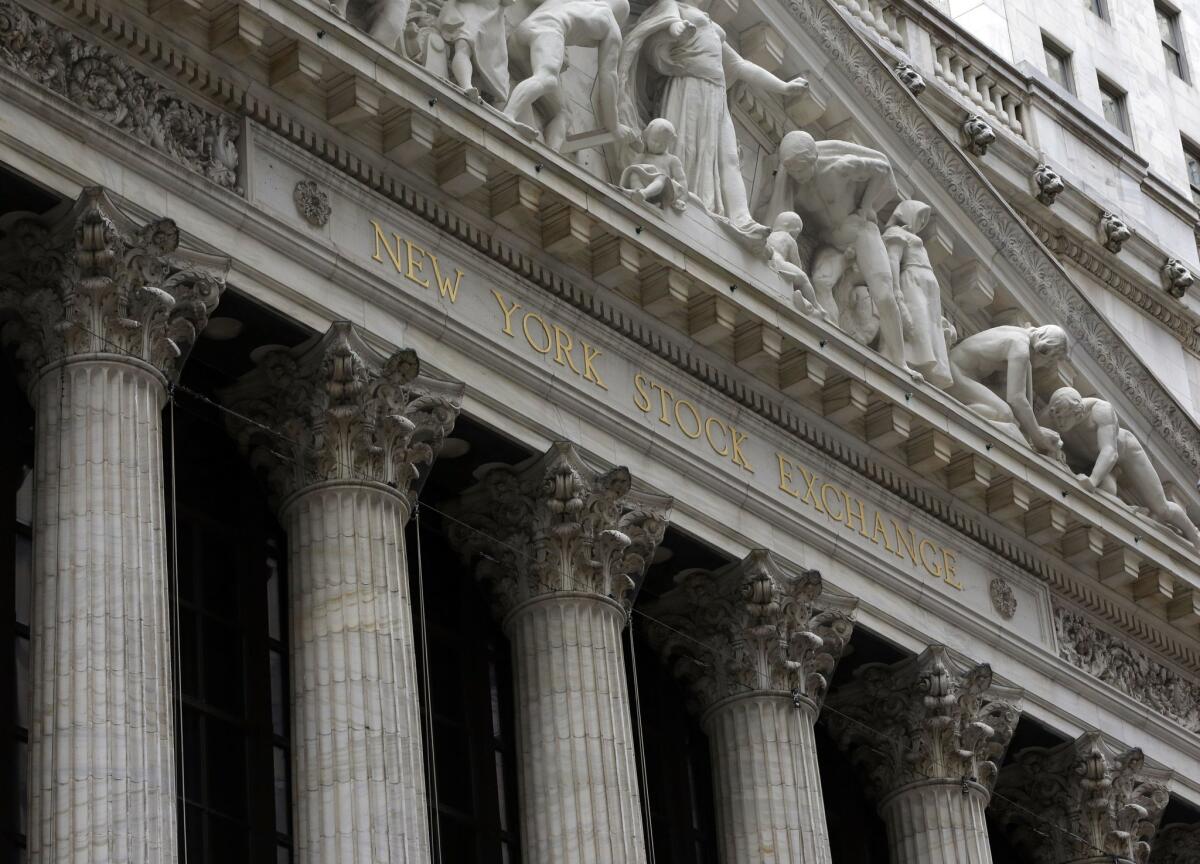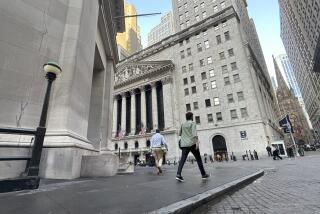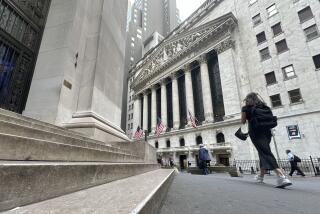Stocks slip after weaker economic growth, but end best month since 2011

February proved to be a strong month for U.S. stocks, even though it ended in downbeat fashion.
Major stock indexes closed lower on Friday, capping a week of subdued trading that still delivered a couple of new highs for the Dow Jones industrial average and Standard & Poor’s 500 index. It also brought the Nasdaq composite within striking distance of its March 2000 high.
The Nasdaq notched the biggest monthly gain at 7.1%. But the S&P 500’s 5.5% performance marked its best monthly increase since October 2011, and a turnaround from its 3.1% slide in January. The Dow rose 5.6% for the month.
Trading was listless for much of Friday as investors balanced encouraging reports on housing and consumer confidence against data showing that the U.S. economy grew at a slower annual rate in the final months of 2014 than previously estimated. Oil rose, recouping some of its losses from a day earlier. Technology stocks were among the biggest decliners.
“Many people are trying to figure out what to do, taking some profits when they can. We saw that over the past couple of days with tech stocks,” said JJ Kinahan, TD Ameritrade’s chief strategist. “It’s a wait-and-see attitude.”
The Dow ended down 81.72 points, or 0.5%, to 18,132.70. That’s down 0.5% from its most-recent high of 18,224.57 on Wednesday.
The S&P 500 slid 6.24 points, or 0.3%, to 2,104.50. The index is down 0.5 from a high of 2,115.48 on Tuesday.
The Nasdaq fell 24.36 points, or 0.5%, to 4,963.53. The index has been inching closer to crossing the 5,000-point mark, something it hasn’t done since March 2000 at the height of the dot-com era. It’s now within 86 points of that peak.
The three main U.S. stock indexes are all up for the year.
The current bull market, now in its sixth year, has been powered by strong corporate earnings growth and low interest rates, which make stocks more attractive relative to bonds. Strong job growth and improving consumer confidence have also encouraged traders, despite signs of sluggishness in Europe and elsewhere.
Some of that confidence appeared shaken on Friday, when the Commerce Department reported that the U.S. economy grew at an annual rate of 2.2% in the October-December quarter, weaker than the 2.6% estimate last month. The latest growth projection represents a major slowdown from the previous quarter, which produced the strongest growth in 11 years.
Other economic bellwethers were more upbeat: An index of pending home sales, an indicator of potentially completed sales, rose in January and the December figure was revised higher to show a smaller decline. Separately, the University of Michigan’s index of consumer sentiment slipped this month. It remains at the highest level in eight years.
“The market does not have a clear catalyst to either cause it to sell off or to surge forward, and we’re getting a little expensive from a valuation perspective,” said David Heidel, regional investment director at U.S. Bank Wealth Management.
Investors should get a better sense of the economy and consumers’ willingness to spend next week, when automakers report their February sales figures and the government issues its monthly update on hiring.
All told, eight of the 10 sectors in the S&P 500 ended lower, with technology stocks notching the biggest decline. The sector is up 4.2% this year. Consumer staples rose the most. Those stocks are up 2.9% this year.
Several energy companies were among the biggest decliners in the S&P 500.
Southwestern Energy fell $1.27, or 4.8%, to $25.08, while NRG Energy lost 79 cents, or 3.2%, to $23.98. Chesapeake Energy slid 52 cents, or 3%, to $16.68.
Benchmark U.S. crude rose $1.59 to $49.76 a barrel on the New York Mercantile Exchange. Brent crude rose $2.53 to $62.58 a barrel in London.
U.S. oil prices appeared to stabilize in February around the $50 a barrel mark. That’s made a key variable of business more predictable for investors, Kinahan said.
“That’s really the kind of thing that gives stability to the stock market,” Kinahan said.
U.S. government bond prices rose. The yield on the 10-year Treasury note slipped to 1.99% from 2.03% late Thursday.
In metals trading, gold edged up $3 to $1,213.10 an ounce, silver fell seven cents to $16.51 an ounce and copper was flat at $2.72 a pound.
In other energy futures trading:
— Wholesale gasoline rose 6 cents to $1.768 a gallon
— Heating oil jumped 16.3 cents to $2.30 a gallon
— Natural gas rose 3.7 cents to $2.734 per 1,000 cubic feet
Among other stocks making big moves Friday:
— Shares in J.C. Penney slumped 6.8%, a day after the department store chain reported a surprise loss as expenses increased. The stock lost 62 cents to $8.50.
— Weight Watchers slid 35.5% after the weight-loss program operator issued an outlook late Thursday for this year’s profits that fell far below Wall Street’s expectations. The company fell $6.23 to $11.33.
— Monster Beverage moved sharply higher a day after the energy drink seller reported higher fourth-quarter earnings and improved sales. The stock surged $16.38, or 12.1%, to $141.12.
More to Read
Inside the business of entertainment
The Wide Shot brings you news, analysis and insights on everything from streaming wars to production — and what it all means for the future.
You may occasionally receive promotional content from the Los Angeles Times.










